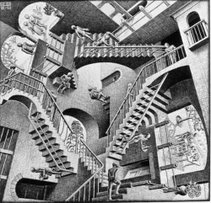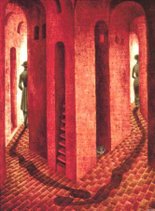
This is the approximate location of Broca's area in the inferior frontal gyrus of the frontal lobe of the cortex. It was discovered by Pierre Paul Broca in 1861. One of his patients could understand speech but was unable to speak. Upon the patient's death, it was shown that the area darkened in the diagram above was damaged. The speech defect caused by damage to Broca's area is called expressive aphasia, motor aphasia or Broca's aphasia. A person suffering from this condition is unable to put together sentences that are grammatically complex. In addition, the sentences typically contain very few words related to content.
A study has shown that musical syntax is also processed in Broca's area and another study says Broca's area is involved in processing hierarchically structured behaviors regardless of their temporal organization (these kinds of hierarchical behaviors are necessary for language, since meaning depends on grammatical relations, which are themselves hierarchical rules for encoding relational information in a temporal sequence. So, the authors hypothesized that Broca's area, necessary for grammar, might also be necessary for these kinds of temporal plans).
There are tow parts of Broca's area, which represent different roles during language comprehension and production:
- Pars triangularis (anterior), which is thought to support the interpretation of various 'modes' of stimuli (plurimodal association) and the programming of verbal conducts
- Pars opercularis (posterior), which is thought to support the management of only one kind of stimulus (unimodal association) and the coordination of the speech organs for the actual production of language, given its favorable position close to motor-related areas











No comments:
Post a Comment